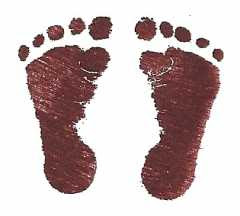
 What if I told you there is an ingredient in certain foods that could help you reduce your risk of constipation, hemorrhoids, high cholesterol, high blood sugar, obesity, colon cancer, diabetes and heart disease. Would you be interested to know what that ingredient was?
What if I told you there is an ingredient in certain foods that could help you reduce your risk of constipation, hemorrhoids, high cholesterol, high blood sugar, obesity, colon cancer, diabetes and heart disease. Would you be interested to know what that ingredient was?The magic ingredient is.. FIBRE! Fibre is one of nature's great ingredients that does wonders for our body. Fibre is a virtually indigestible substance that is found mainly in the outer layers of plants. Fibre is a special type of carbohydrate that passes through the human digestive system virtually unchanged, without being broken down into nutrients. Carbohydrates constitute the main source of energy for all body functions; (ehealth MD).
Fibre has huge effects on our digestive processes since it is indigestible. There are two types of fibre that we consume, Soluble and Insoluble Fibre.
- Soluble Fibre-is made up of polysaccharides (carbohydrates that contain three or more molecules of simple carbohydrates), and dissolves in water. It has a beneficial effect on body chemistry, such as lowering blood cholesterol and blood sugar levels.
- Insoluble Fibre-is mainly made up of plant cell walls, and it cannot be dissolved in water. It has a good laxative action.
- Fibre demands that food be more thoroughly chewed. It slows down the eating process and helps contribute to a feeling of being full, which in turn can help prevent obesity from overeating.
- Fibre makes food more satisfying, probably because the contents of the stomach are bulkier and stay there longer.
- Fibre slows digestion and absorption so that glucose (sugar) in food enters the bloodstream more slowly, which keeps blood sugar on a more even level.
- Fibre is broken down in the
colon (the main part of the large intestine) by bacteria (a process called fermentation), and the simple organic acids produced by this breakdown helps to nourish the lining of the colon.
- These acids also provide fuel for the rest of the body, especially the liver, and may have an important role in metabolism.
(The fibre count for most packaged foods can be found on the label.)
| FRUIT | AMOUNT | FIBER (grams) |
| Apples with skin | 1 medium | 5.00 |
| Apricot | 3 medium | 0.98 |
| Apricots, dried | 5 pieces | 2.89 |
| Banana | 1 medium | 3.92 |
| Blueberries | 1 cup | 4.18 |
| Cantaloupe, cubes | 1 cup | 1.28 |
| Figs, dried | 2 medium | 3.74 |
| Grapefruit | 1/2 medium | 6.12 |
| Orange, navel | 1 medium | 3.40 |
| Peach | 1 medium | 2.00 |
| Peaches, dried | 3 pieces | 3.18 |
| Pear | 1 medium | 5.08 |
| Plum | 1 medium | 1.00 |
| Raisins | 1.5 oz box | 1.60 |
| Raspberries | 1 cup | 8.34 |
| Strawberries | 1 cup | 3.98 |
| VEGETABLES | AMOUNT | FIBER (grams) |
| Avocado (fruit) | 1 medium | 11.84 |
| Beets, cooked | 1 cup | 2.85 |
| Beet greens | 1 cup | 4.20 |
| Bok choy, cooked | 1 cup | 2.76 |
| Broccoli, cooked | 1 cup | 4.5 |
| Brussels sprouts | 1 cup | 2.84 |
| Cabbage, cooked | 1 cup | 4.20 |
| Carrot | 1 medium | 2.00 |
| Carrot, cooked | 1 cup | 5.22 |
| Cauliflower, cooked | 1 cup | 3.43 |
| Cole slaw | 1 cup | 4.00 |
| Collard greens, cooked | 1 cup | 2.58 |
| Corn, sweet | 1 cup | 4.66 |
| Green beans | 1 cup | 3.95 |
| Celery | 1 stalk | 1.02 |
| Kale, cooked | 1 cup | 7.20 |
| Onions, raw | 1 cup | 2.88 |
| Peas, cooked | 1 cup | 8.84 |
| Peppers, sweet | 1 cup | 2.62 |
| Pop corn, air-popped | 3 cups | 3.60 |
| Potato, baked w/skin | 1 medium | 4.80 |
| Spinach, cooked | 1 cup | 4.32 |
| Summer squash, cooked | 1 cup | 2.52 |
| Sweet potato, cooked | 1 cup | 5.94 |
| Swiss chard, cooked | 1 cup | 3.68 |
| Tomato | 1 medium | 1.00 |
| Winter squash, cooked | 1 cup | 5.74 |
| Zucchini, cooked | 1 cup | 2.63 |
| CEREAL, GRAINS, PASTA | AMOUNT | FIBER (grams) |
| Bran cereal | 1 cup | 19.94 |
| Bread, whole wheat | 1 slice | 2.00 |
| Oats, rolled dry | 1 cup | 12.00 |
| Pasta, whole wheat | 1 cup | 6.34 |
| Rice, dry brown | 1 cup | 7.98 |
| BEANS, NUTS, SEEDS | AMOUNT | FIBER (grams) |
| Almonds | 1 oz | 4.22 |
| Black beans, cooked | 1 cup | 14.92 |
| Cashews | 1 oz | 1.00 |
| Flax seeds | 3 tbs | 6.97 |
| Garbanzo beans, cooked | 1 cup | 5.80 |
| Kidney beans, cooked | 1 cup | 13.33 |
| Lentils, red cooked | 1 cup | 15.64 |
| Lima beans, cooked | 1 cup | 13.16 |
| Peanuts | 1 oz | 2.30 |
| Pistachio nuts | 1 oz | 3.10 |
| Pumpkin seeds | 1/4 cup | 4.12 |
| Soybeans, cooked | 1 cup | 7.62 |
| Sunflower seeds | 1/4 cup | 3.00 |
| Walnuts | 1 oz | 3.08 |
Remember, if your goal is fat loss you should be eating your grain based fibres after your workouts to effectively fuel your body at the right time so it doesn't store the excess carbs as fat.
If your diet has been depleted of fibre than it is best to start slowly, over 2-4 weeks, by incorporating some of the foods in the above chart. Don't start a high-fibre diet overnight! Your goal is to consume your daily recommendation of 25-30 grams of fibre a day after those 2-4 weeks. It's important to drink more fluids when you increase the amount of fibre you eat. You should drink at least eight glasses of water a day, especially when increasing your fibre intake.
I hope this post has helped shed some light on the importance that fibre plays in promoting a long and healthy life. Feel free to leave your comments or questions below!
Yours in Great Health,
Ryan








I'm saving the table. Very helpful. thanks
ReplyDelete